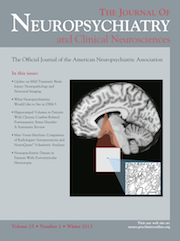Increasing Performance in Children With ADHD By Trapping Lead With a Nano-Zeolite
To the Editor: Attention deficit hyperactivity disorder (ADHD) is one of the most common neurobehavioral disorders.1 Children with ADHD are inattentive and/or hyperactive/impulsive in more than one setting, such as at home, school, and work.2 Some environmental factors, such as maternal smoking during pregnancy, delivery complications, and air pollution increase the rates of ADHD.1 Among air pollutants, high lead exposure has a significant association with ADHD performance.3
Zeolites are mineral substances that have a framework of aluminosilicates. Clinoptilolite is a zeolite consisting of network of pores with a range of 4.6–7.5 Å. Clinoptilolite is used in many experiments for adsorption of heavy metals. A study has demonstrated the use of clinoptilolite as an adsorbent of heavy metals (Pb2+, Cu2+, Ni2+, and Cd2+). In another work, heavy metals were removed by clinoptilolite in multicomponent systems.4
On the other hand, clinoptilolite is applied for many in-vitro and in-vivo experiments. In one study, the natural clinoptilolite was used as new adjuvant in anticancer therapy. Also, the Zn2+-exchanged clinoptilolite is used as an active carrier for antibiotics in anti-acne topical therapy.5
Based on abovementioned points, we hypothesize that if the clinoptilolite solution is prepared and injected to the blood of children with ADHD, it can trap the lead into its nano-pores. After this process, clinoptilolite can be excreted in the stool. Therefore, the amount of lead in their body will be decreased and lead to reduction of the symptoms and improvement of function. Surely, clinical data can uphold the accuracy of this hypothesis.
1 : Kaplan & Sadock's Synopsis of Psychiatry: Behavioral Sciences/Clinical Psychiatry, 10th Edition. Lippincott Williams & Wilkins, 2007Google Scholar
2 : The role of cerebellar rehabilitation in improvement of ADHD imbalance. J Neuropsychiatry Clin Neurosci 2011; 23:E34Link, Google Scholar
3 : Environmental exposure to lead, but not other neurotoxic metals, relates to core elements of ADHD in Romanian children: performance and questionnaire data. Environ Res 2010; 110:476–483Crossref, Medline, Google Scholar
4 : Study of the selection mechanism of adsorption on clinoptilolite. J Colloid Interface Sci 2006; 304:21–28Crossref, Medline, Google Scholar
5 : Natural zeolite clinoptilolite: new adjuvant in anticancer therapy. J Mol Med (Berl) 2001; 78:708–720Crossref, Medline, Google Scholar



